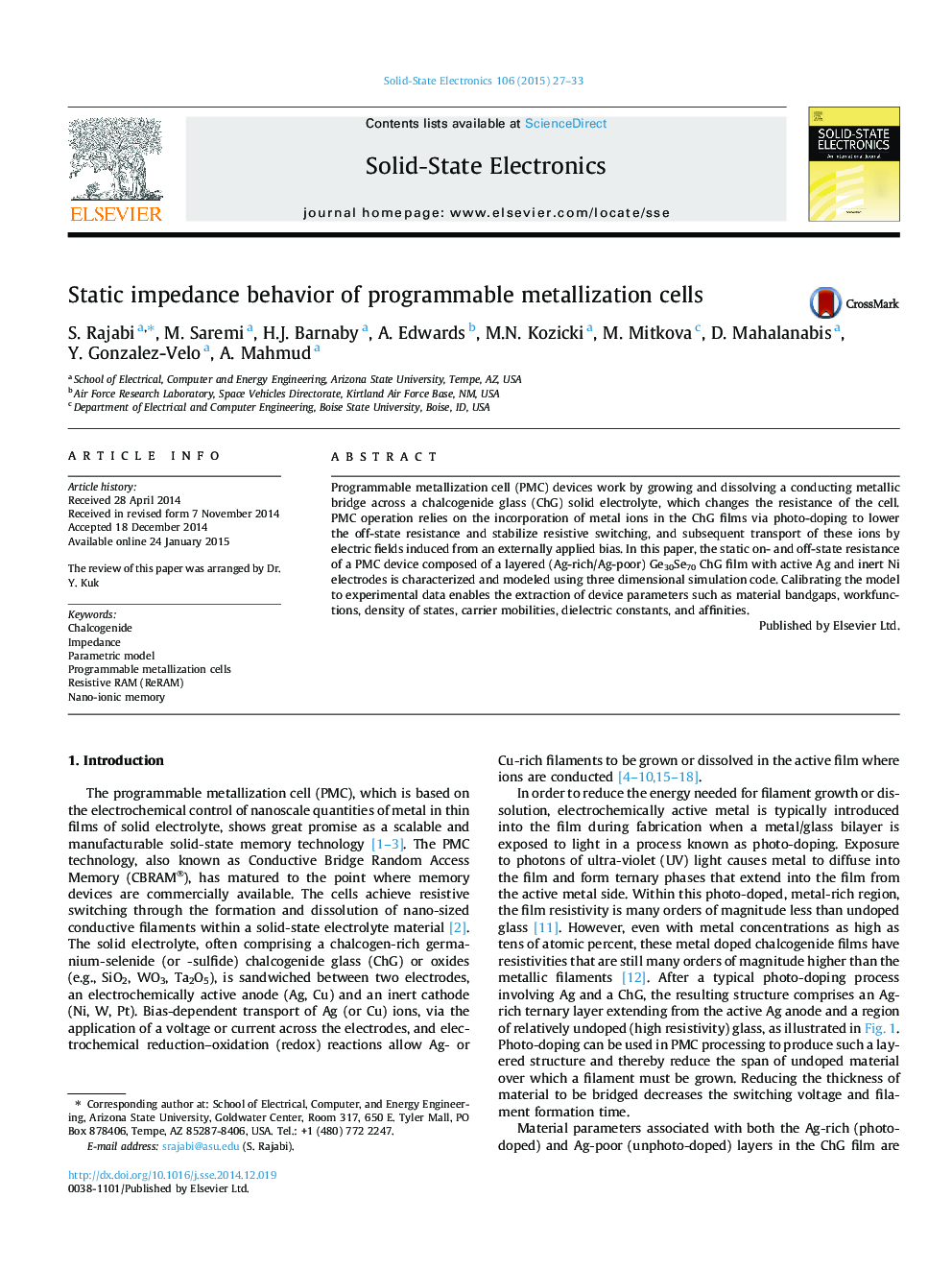| Article ID | Journal | Published Year | Pages | File Type |
|---|---|---|---|---|
| 746479 | Solid-State Electronics | 2015 | 7 Pages |
•We developed and verified a physical parametric model that captures the static behavior of PMCs.•Impedance spectroscopy helps to reveal the chalcogenide properties by non-destructive means.•The presented model has been kept simple and allows easy integration into device simulators.
Programmable metallization cell (PMC) devices work by growing and dissolving a conducting metallic bridge across a chalcogenide glass (ChG) solid electrolyte, which changes the resistance of the cell. PMC operation relies on the incorporation of metal ions in the ChG films via photo-doping to lower the off-state resistance and stabilize resistive switching, and subsequent transport of these ions by electric fields induced from an externally applied bias. In this paper, the static on- and off-state resistance of a PMC device composed of a layered (Ag-rich/Ag-poor) Ge30Se70 ChG film with active Ag and inert Ni electrodes is characterized and modeled using three dimensional simulation code. Calibrating the model to experimental data enables the extraction of device parameters such as material bandgaps, workfunctions, density of states, carrier mobilities, dielectric constants, and affinities.
